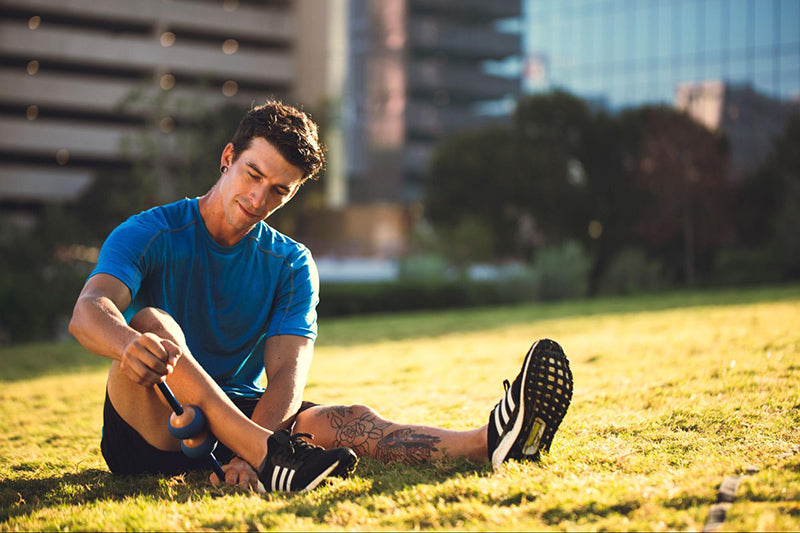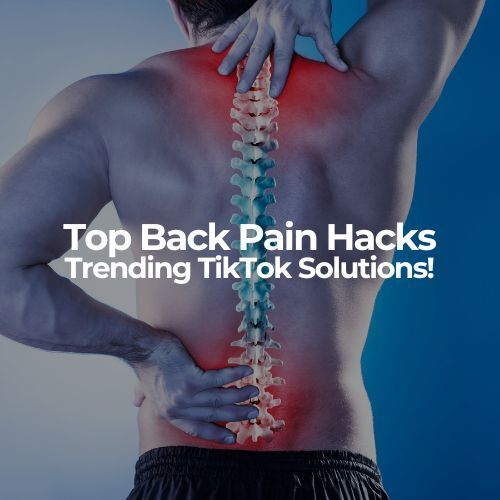
In fitness and so many other areas, women have overcome and continue to fight against limiting stereotypes, pay inequality, unnecessary regulation and so many more barriers, and while so many privilege gaps are slowly closing, there is still a huge discrepancy in male and female athletes when it comes to injury, and knee injuries are a top contributor. When you consider that knee injuries are potentially career-ending events, it’s clear why more knowledge is needed around the causes and prevention tactics for knee injury to keep our top athletes in the game.
Alex Morgan, a US Women’s Soccer player suffered a devastating ACL knee injury as a senior in high school. After successful surgery and focused efforts in rehab, she became one of the most recognizable female athletes in the world with two World Cup wins and was named ESPY’S “Female Athlete of the Year.”
Serena Williams, US Women’s Tennis, knows how devastating it is to pull out of tournaments due to injury such as a knee and ankle injuries and what it takes to come back and return to the top of her game. She currently has 23 Grand Slam titles, has played professionally over 4 decades, and reached no. 1 in the world multiple times.
Sue Bird, US Women’s Basketball and WNBA Legend, has overcome more than one knee injury that resulted in surgery only to come back to lead her teams. She has won four WNBA championships with the Storm, a historic five Olympic gold medals, two NCAA Championships with UConn, and four FIBA World Cups.
These cases show us that women are strong and capable of overcoming injury, but why is knee injury so much more common in women, and what can we do to help prevent injury among female athletes?
Why Is Knee Injury More Common in Women?
So many factors affect the commonality of knee injuries in women. Some internal factors that have been studied include hormones, neuromuscular control, biomechanics, and anatomy. There is evidence that tibial slope, smaller ACL size are big contributors, but there are also external factors which include societal differences in sports participation and improper landing technique tending to be more common in women which can stem all the way back to differences in how we train male and female athletes.
The commonality is that we need to take all of these factors into consideration to create more comprehensive strategies around training and preparing athletes to reduce as many of the risk factors as possible.
What is Anterior Cruciate Ligament (ACL) Knee Injury?
The ACL is a key knee stabilizer that prevents anterior translation of the tibia relative to the femur and provides rotatory stability. Knee stability is important for many sports, and multidirectional land-based sports with cutting and jumping are more difficult to perform with an ACL-deficient knee.1
ACL Knee Injury is a devastating injury for both males and females, yet it is 2-8 times more prevalent in females. Female soccer players with ACL reconstruction had nearly a 5-fold-higher rate of new ACL injuries and a 2- to 4- fold-higher rate of other new knee injuries, quit soccer to a higher degree, and reduced their activity level to a greater extent as compared with knee-healthy controls.5
Approximately 200,000 ACL injuries occur annually, with >50% occurring in high school– and college-age athletes.3

How Can Myofascial Health and Release Make a Difference?
Incorporating myofascial release into movement prep and recovery leads to benefits that result in injury prevention, better performance, and faster return to activity after an injury.
- Myofascial release increases blood flow to support hydration, sending nutrients to fascial layers, improving tissue repair and reducing pain
- Increased soft tissue mobility improves joint range of motion
- Practicing consistent soft tissue release supports deep tissue layers and their elastic properties to provide bounce, absorb force, stretch, and recoil
- Soft tissue health Improves neuromuscular efficiency to improve motion control to reduce risk of injury and also neuromuscular retraining after an injury
- Myofascial release restores healthy tension balance in the muscle and connective tissues linked to a joint or muscle area within the kinetic chain
- Proper myofascial care enhances recovery in muscle and connective tissue while building strength, postural control, endurance, and power
While proper myofascial release is important for everybody, preventative maintenance, especially as it relates to the ACL, can help close the injury gap between male and female athletes. As a woman-run company of former collegiate athletes, the MOBO team all have first-hand experience with knee injuries, and the topic is central to why we believe in the importance of myofascial release and proper muscle care. If we could give our younger selves advice, we would have taken better care of our body through better warmup and recovery strategies, and when an injury did interrupt our season, we would better understand how soft tissue care helps you get back to the game faster.
What Areas Should I Focus on to Reduce the Risk of ACL Injury?
MOBO soft tissue releases to target ACL knee injury prevention and recovery focused movement prep and recovery sessions.
Benefits
- This sequence allows you to continue ACL rehab progress at home
- Provides fluid exchange for healing and repair
- Releases tension for better knee joint alignment
- Better muscle engagement for effective rehab
Sequence of Releases
- Calf - Anchor and Roll
- Outer Lower Leg – Anchor and Roll
- Hamstring - Anchor and Roll
- Quad - Rolling
- IT Band - Rolling
- Front Hip - Press and Move
- Glute - Press and Move
References
- Lin CY, Casey E, Herman DC, Katz N, Tenforde AS. Sex Differences in Common Sports Injuries. PM R. 2018 Oct;10(10):1073-1082. doi: 10.1016/j.pmrj.2018.03.008. Epub 2018 Mar 14. PMID: 29550413; PMCID: PMC6138566.
Link: https://pubmed.ncbi.nlm.nih.gov/29550413/ - Gokeler A, Neuhaus D, Benjaminse A, Grooms DR, Baumeister J. Principles of Motor Learning to Support Neuroplasticity After ACL Injury: Implications for Optimizing Performance and Reducing Risk of Second ACL Injury [published correction appears in Sports Med. 2019 Feb 21;:]. Sports Med. 2019;49(6):853-865. doi:10.1007/s40279-019-01058-0
Link: https://pubmed.ncbi.nlm.nih.gov/30719683/ - Mather RC 3rd, Koenig L, Kocher MS, et al. Societal and economic impact of anterior cruciate ligament tears. J Bone Joint Surg Am. 2013;95(19):1751-1759. doi:10.2106/JBJS.L.01705
- Kaeding CC, Léger-St-Jean B, Magnussen RA. Epidemiology and Diagnosis of Anterior Cruciate Ligament Injuries. Clin Sports Med. 2017 Jan;36(1):1-8. doi: 10.1016/j.csm.2016.08.001. Epub 2016 Oct 4. PMID: 27871652.
- Fältström A, Kvist J, Gauffin H, Hägglund M. Female Soccer Players With Anterior Cruciate Ligament Reconstruction Have a Higher Risk of New Knee Injuries and Quit Soccer to a Higher Degree Than Knee-Healthy Controls. Am J Sports Med. 2019 Jan;47(1):31-40. doi: 10.1177/0363546518808006. Epub 2018 Nov 27. PMID: 30481050.
Link: https://journals.sagepub.com/doi/10.1177/0363546518808006 - Bordoni, B. & Myers, T. (2020). A review of the theoretical fascial models: Biotensegrity, fascintegrity, and myofascial chains. Cureus. 12(2): e7092. doi10.7759/cureus.7092.Barnes, J.M. (1997). The basic science of myofascial release: Morphologic change in connective tissue. J Bodyw Mov Ther. 1(4): 231-238.
- Bradbury-Squires, D.J., Noftall, J.C., Sullivan, K.M., Behm, D.G., Power, K.E. & Button, D.C. (2015). Roller-massager application to the quadriceps and knee-joint range of motion and neuromuscular efficiency during a lunge. J Athl Train. 50: 133-140.
- Parsons JL, Coen SE, Bekker S. Anterior cruciate ligament injury: towards a gendered environmental approach. Br J Sports Med. 2021 Sep;55(17):984-990. doi: 10.1136/bjsports-2020-103173. Epub 2021 Mar 10. PMID: 33692033.
Link : 10.1136/bjsports-2020-103173



